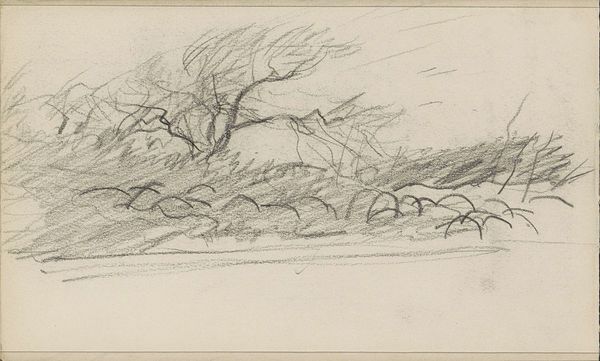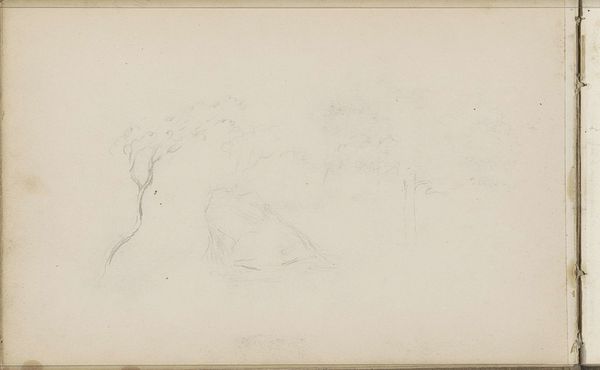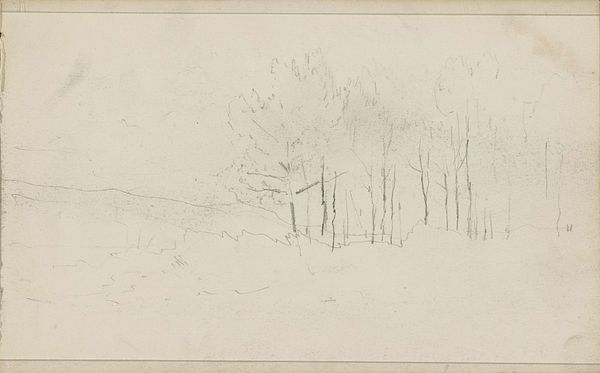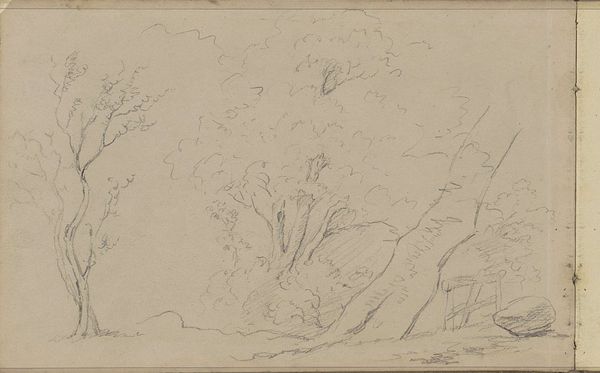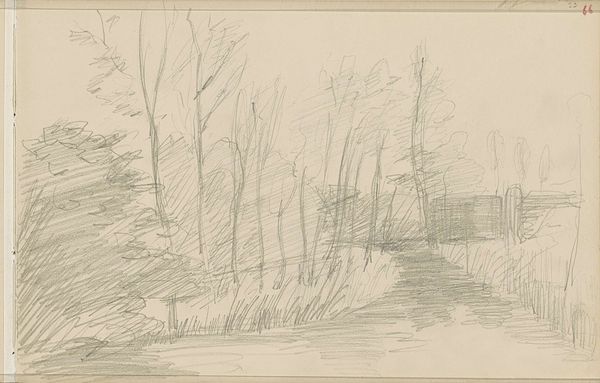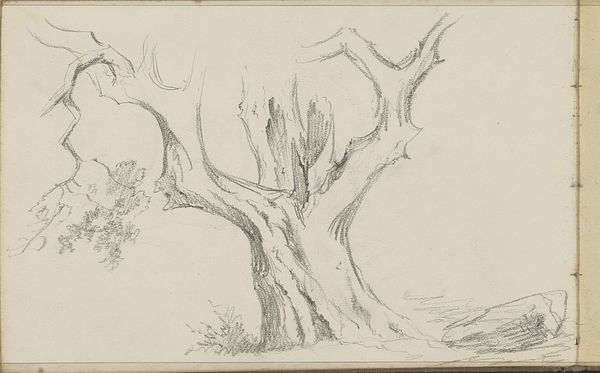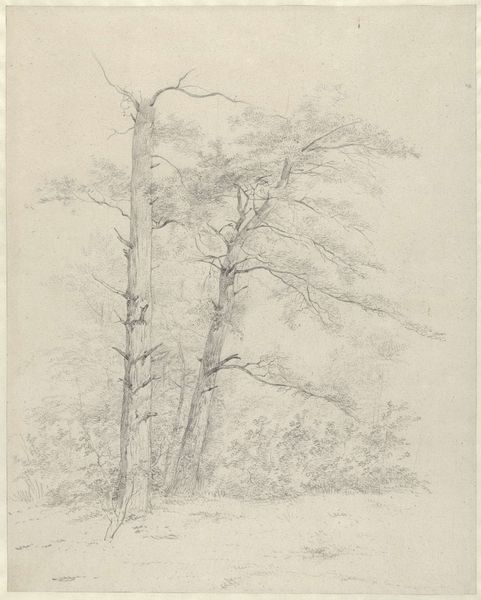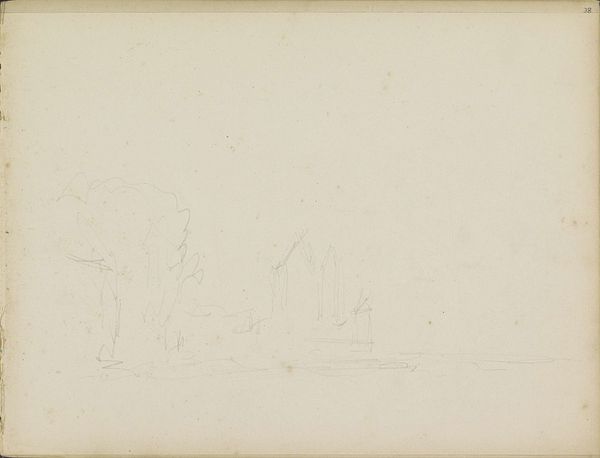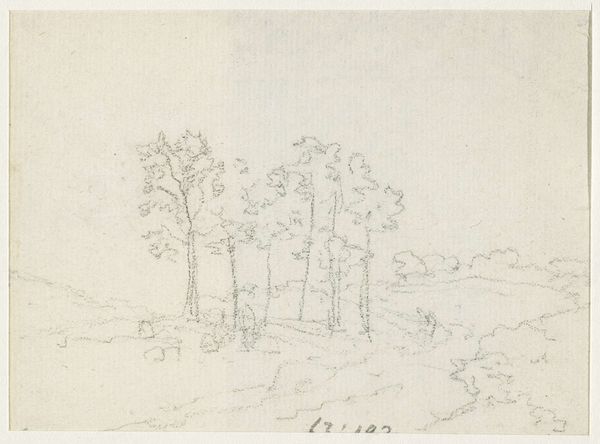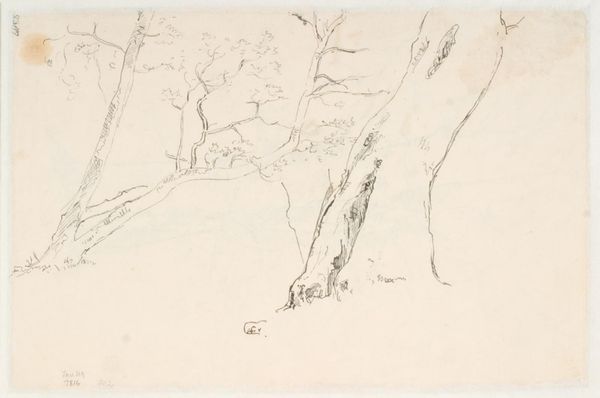
drawing, pencil, frottage
#
drawing
#
impressionism
#
pencil sketch
#
landscape
#
etching
#
pencil
#
frottage
Copyright: Rijks Museum: Open Domain
Curator: Anton Mauve created this drawing, known as "Ruiters," sometime between 1848 and 1888. You can see it on display here at the Rijksmuseum. It seems he primarily worked in pencil for this piece. What's your initial feeling looking at this? Editor: Hmm. "Melancholy" springs to mind. It's so sparse, isn't it? Just the barest whisper of trees and fields. The almost ghostly quality gives it a feeling of something remembered, like a fading photograph. Curator: Yes, the simplicity is quite striking. The use of pencil—and possibly frottage if you look very closely—creates a soft, almost hazy effect. Notice how he captures the essence of a landscape with so few lines. The implied movement of the horses gives this sense of being fleeting, momentary. Could Mauve’s choice of medium point toward an embrace of modernity, where new ways of representing form allowed for more direct engagement with fleeting sensation? Editor: Absolutely. There is also a connection here to a Japanese aesthetic. It feels like he’s capturing the ephemeral—those small, poignant moments that vanish as soon as you register them. Are there elements in this work that tap into something shared and deeper, some collective memory or symbol of vulnerability perhaps? Curator: Possibly. Trees are classic symbols of life, growth, and family ties. Here, with the barren branches, they could also represent resilience through winter and times of struggle. The riders on horses, though indistinct, symbolize power, or movement towards perhaps. I imagine that his audience, even at the time, would have had to navigate between tradition and change; this imagery strikes a certain resonance, a moment in which to feel empathy with Mauve’s sensibility. Editor: Right, there's something about the sketchiness of the drawing that conveys uncertainty. Not knowing what the next stage in their journey looks like. So in these figures, these horses that can take the viewer beyond, but they're held in this kind of very light landscape – a dream state? I suppose one must find a new path for oneself, but that's very unsettling and freeing all at once. Curator: It truly seems like he captured an experience on the threshold, teetering between eras. It gives the viewer pause to consider it, I think. Editor: Well, I will definitely think differently when I see a tree or drawing from now on! Thanks.
Comments
No comments
Be the first to comment and join the conversation on the ultimate creative platform.


